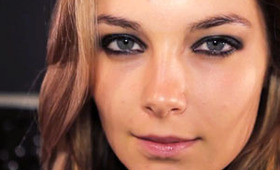
The FDA recently announced new regulations that changed the way sunscreens are packaged and sold in America. In part one of this series, we discussed the changes in broad spectrum classification and the importance of the actual SPF number (15 vs. 100, for instance). In part two, Dr. Marta I. Rendon explains how the regulations affect the labeling of water-resistant sun protection products.
WATERPROOF VS. RESISTANT
Manufacturers cannot label sunscreens as "waterproof" or "sweatproof," or identify their products as "sunblocks," because these claims overstate their effectiveness. Sunscreens also cannot claim to provide sun protection for more than two hours without reapplication or to provide protection immediately after application without submitting data to support these claims and obtaining FDA approval. Water resistance claims on the front label must indicate whether the sunscreen remains effective for 40 minutes or 80 minutes while swimming or sweating, based on standard testing.
"People think if they use 'waterproof' or 'sweatproof' sunscreen, they'll have all-day UV protection and that's just wrong," explains Dr. Rendon. "Sunscreens degrade with sun exposure regardless of the formula, so you need to reapply your sunscreen every two hours for maximum protection. This new ruling will hopefully clarify the water and sweat myth, especially on the beach or while playing outdoor sports."
SUNSCREEN VS. SUNBLOCK
Sun protection products were divided into sunscreen (chemical) and sunblock (physical) before, but now all products will be referred to as sunscreen. "A physical block is something that creates a barrier on the skin that blocks the sun's rays. A chemical screen creates a reaction on the skin that prevents the UV rays from penetrating," clarifies Dr. Rendon. "Neither are better than the other, it's just preference and sensitivity. The FDA was worried that people would think the term 'sunblock' was more effective, so this eliminates any confusion."
Missed Part 1 of our FDA Sunscreen? Find out why broad spectrum classifications are changing and SPF levels are capping at 50.
You Might Also Like
-

Hair
Bottega Veneta Beauty, Milan Fashion Week S/S 2012
- 4
-

Fashion Week News
Libertine Makeup, New York Fashion Week S/S 2012
- 3
-

Fashion Week News
Erickson Beamon Beauty, New York Fashion Week S/S 2012
- 4
-

Fashion Week News
Mara Hoffman Beauty, New York Fashion Week S/S 2012
- 5
-

Fashion Week News
Norman Ambrose Nails, New York Fashion Week S/S 2012
- 12
-

Fashion Week News
Mary Katranzou Makeup, London Fashion Week S/S 2012
- 5
-

Fashion Week News
Louise Gray Makeup, London Fashion Week S/S 2012
- 4
-

Fashion Week News
Richard Chai Hair, New York Fashion Week S/S 2012
- 5












